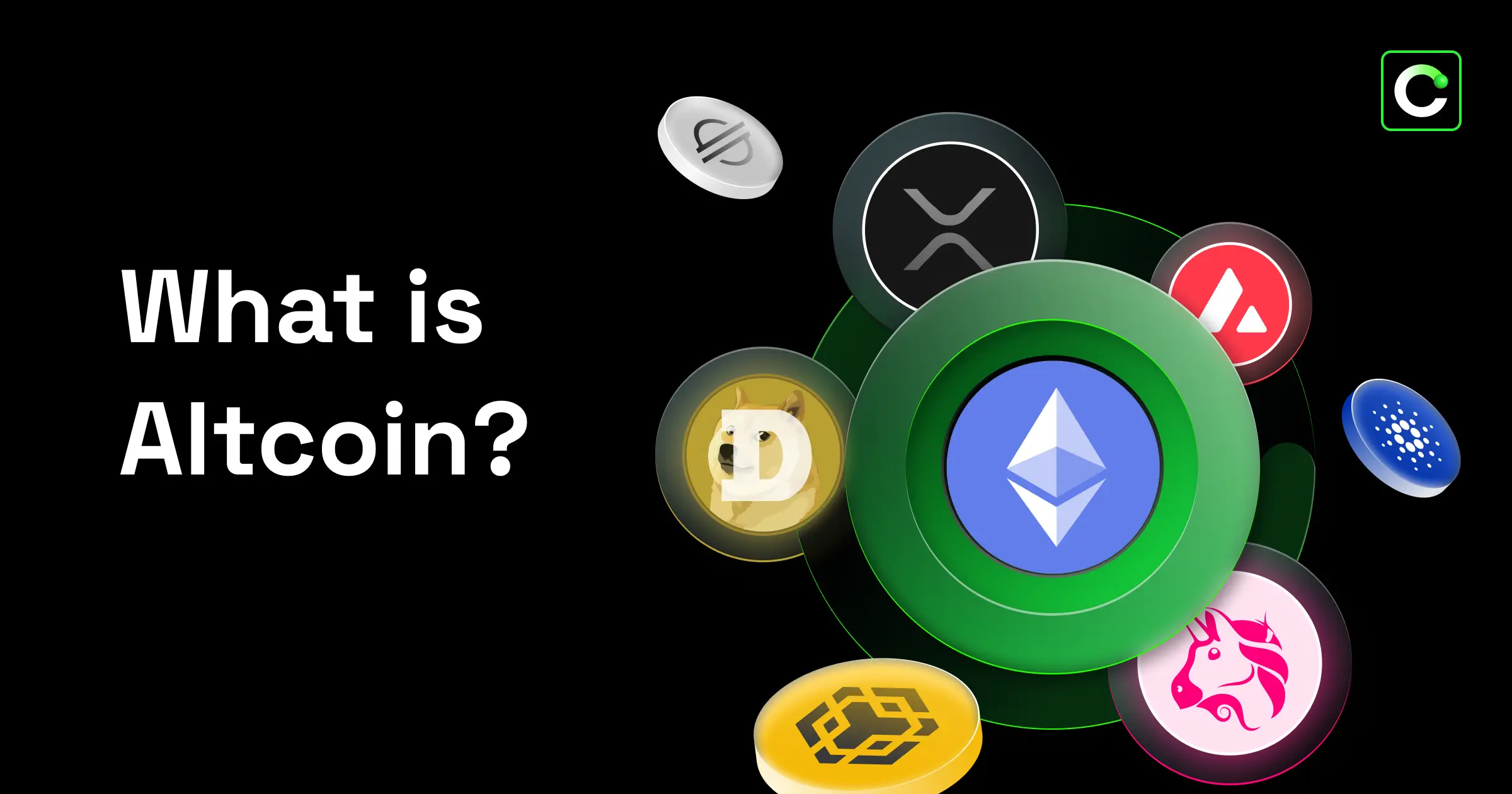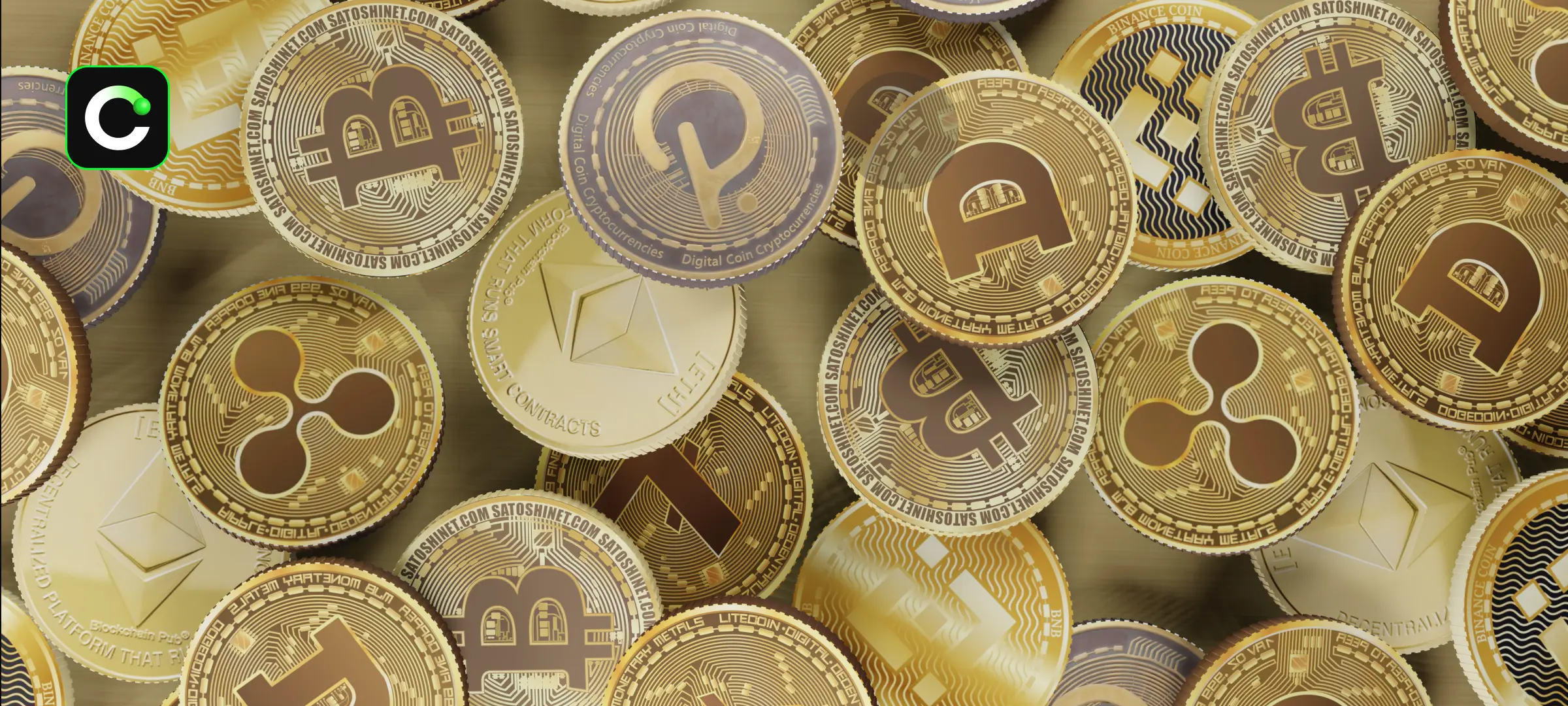What is Altcoin? Altcoin Season 

Cryptocurrency Exchange

In the cryptocurrency world, all crypto assets other than
Bitcoin are referred to as “altcoins.” These digital assets, which offer advanced features and have different use cases, attract the attention of investors and hold a significant place in the crypto market. In this article, we provide a comprehensive guide starting from the question “What is an altcoin?” and covering the best altcoins, altcoin prices, the altcoin season, and investment processes.
What is an Altcoin?
Altcoin is the abbreviation of the term “alternative coin.” All digital assets developed after Bitcoin fall into this category. Altcoins are generally based on Bitcoin’s technical structure but differentiate themselves with their own blockchain, purpose, and use case.
Projects such as Ethereum, Solana, and Cardano are examples of altcoins. These assets are not only used as a means of payment but are also utilized in smart contracts,
decentralized finance (DeFi), gaming, and NFT ecosystems.
Why Altcoins?
Altcoins emerged to offer different solutions to the crypto ecosystem. While Bitcoin has limited functionality, altcoin projects generally provide advantages such as faster transactions, lower fees, enhanced privacy, or specific use-case scenarios.
For investors, they offer the opportunity to diversify and spread portfolio risk. In addition, altcoins with low market capitalization attract attention to their high return potential.
The Reason Altcoins Emerged
Bitcoin’s success demonstrated that
blockchain technology could be applied to a wider range of fields. This vision laid the groundwork for the birth of altcoin projects.
The first altcoin, Namecoin, was developed in 2011. This was followed by more advanced protocols such as Litecoin. Each was developed to solve a specific problem or open up a new area.
For example, Ethereum introduced smart contracts into our lives, while Monero focused on anonymous transactions. The main starting point of altcoins is to expand Bitcoin’s limited use cases and offer different solutions.
What is the Difference Between Bitcoin and Altcoins?

Bitcoin, as the first application of blockchain technology, started the digital currency revolution. Altcoins, on the other hand, are crypto assets built on this foundation and serve different purposes. Although both are part of the same ecosystem, there are important structural and functional differences between them.
Bitcoin’s main purpose is to be a digital payment method. With its limited supply of 21 million tokens and strong network security, it is considered a store of value. These characteristics have earned it the title of “digital gold.”
Altcoins, however, offer broader functionalities. Ethereum enables the development of decentralized applications, while Polkadot allows data transfer between blockchains. In other words, altcoins contribute not only to finance but also to technological infrastructure.
In addition to technological differences, transaction speeds, fee structures, and consensus mechanisms also vary. For example, while Bitcoin uses the Proof of Work (PoW) algorithm, many altcoins prefer the more environmentally friendly and faster
Proof of Stake (PoS) model.
In summary, while Bitcoin has increasingly positioned itself as a store of value, altcoins offer functionality, innovation, and diversity, driving the development of the blockchain world.
Altcoin Mining: Basics and Processes
Altcoin mining is a digital process carried out to validate transactions on blockchain and produce new coins. In this system, network participants, miners solve complex mathematical problems to create new blocks and earn rewards in return. This reward is usually given in the respective altcoin.
The mining process varies depending on the consensus algorithm the altcoin uses. In altcoins using the Proof of Work (PoW) algorithm, just like Bitcoin, high computational power is required. This method stands out for its security and decentralization but consumes a significant amount of energy.
On the other hand, in systems like Proof of Stake (PoS), instead of mining, “
staking” is performed. This means users lock their coins for a certain period to contribute to network security and earn rewards. This method is both more eco-friendly and more accessible in terms of hardware costs.
Some altcoins support GPU mining, while others require specialized hardware (ASIC). Therefore, an altcoin’s mining model is an important factor that determines both the technical equipment requirements and the potential returns.
Altcoin mining allows users to take an active role in the system not only as investors but also as part of the network. In this respect, it offers individual profit while also supporting the sustainability of blockchain networks.
How to Buy Altcoins?
Buying altcoins is a very straightforward process for users who want to enter the crypto world. First, you need a reliable cryptocurrency exchange
CoinTR stands out with its fast registration processes and advanced security measures.
After creating an account, complete the identity verification steps to activate your wallet. Then, you can deposit balances in fiat currencies such as Turkish Lira (TRY) or US dollars. The deposited amount can be easily converted into crypto assets through the altcoin pairs listed on the exchange.
One of the most important things to pay attention to when buying altcoins is the trading pairs. For example, purchases can be made through trading pairs like
ETH/USDT or
SOL/TRY. Users can place a market order to buy instantly at the current price or a limited order to buy at a specific price range they determine.
How to Sell Altcoins?
Selling altcoins is just as quick and straightforward as buying them. All you need is to have the altcoin you wish to sell in your CoinTR wallet. Then, navigate to the trading pair where that altcoin is listed and place a sell order. As with buying, you can choose between a market order and a limited order.
A market order executes instantly at the current price, while a limit order executes only when your set price level is reached. After the sale, the proceeds can either be converted into another cryptocurrency or exchanged into fiat currency and withdrawn to your bank account.
On CoinTR, users can also monitor their transaction history in detail and make strategic sales using the
easy buy-sell feature. These tools offer significant advantages for both short-term traders and long-term holders.
Popular Altcoins in the Market
Although there are hundreds of altcoins in the crypto market, certain projects stand out due to their technology, user base, and adoption rate. Let’s briefly look at some of the most notable ones:
Ethereum (ETH)
The largest altcoin, supporting smart contracts and decentralized applications (dApps). Second only to Bitcoin in market capitalization,
Ethereum is the backbone of the DeFi ecosystem.
Dogecoin (DOGE)
Initially created as a “meme coin,”
Dogecoin grew into a large community-driven project, known for low transaction fees. It often gains attention thanks to Elon Musk’s public support.
Solana (SOL)
Known for its high throughput and low latency,
Solana is widely used in NFT projects and gaming platforms. It’s seen as a strong alternative to Ethereum.
Cardano (ADA)
Developed through academic research,
Cardano is a blockchain project focused on sustainability and scalability. It is particularly popular among long-term investors.
Polygon (MATIC)
A
Layer-2 solution built on Ethereum, aiming to improve scalability and reduce transaction costs. Offers an attractive environment for dApp developers.
Litecoin (LTC)
Developed with a structure similar to Bitcoin,
Litecoin stands out with its faster block production time. It is known as “digital silver” and has long been one of the strong players in the market.
Polkadot (DOT)
Designed for interoperability, enabling different blockchains to work together. Its multi-chain architecture makes it unique.
TRON (TRX)
TRON is a decentralized platform that supports content creators. With its high transaction speed and low-cost structure, it has a significant user base in the Asian market.
While these altcoins are on the radar of both investors and developers, each has its own technological vision. Investment decisions should always consider the use case and the project’s overall credibility.
Advantages and Disadvantages of Altcoins
While altcoins attract attention to the opportunities they offer, they also come with certain risks. The table below provides a simple overview of the pros and cons of investing in altcoins:
|
Advantages
|
Disadvantages
|
|
Offer diverse use cases and technological solutions
|
High market volatility — prices can change rapidly
|
|
Generally more affordable than Bitcoin, making them accessible
|
Some projects lack transparency, posing fraud risks
|
|
Potential for high returns in new projects
|
Regulatory uncertainty may present legal risks
|
|
Enable investment in sectors such as DeFi,
NFT, and GameFi
|
Not all altcoins will survive long-term
|
|
May operate with eco-friendly, scalable consensus mechanisms
|
Low-liquidity projects can be hard to trade
|
Altcoin investments can provide portfolio diversification when managed wisely, but the risks should never be overlooked.
Altcoin Prices
Altcoin prices fluctuate constantly, influenced by factors such as supply-demand dynamics, project developments, investor sentiment, and broader market trends. Due to the inherent
volatility of the crypto market, prices can experience significant swings even within a single day.
Smaller-cap projects are especially sensitive to large buy or sell orders, which can amplify price volatility. One of the most important factors influencing altcoin prices is Bitcoin’s performance BTC rallies often lift altcoin markets, though altcoins can sometimes move independently based on their own fundamentals.
What is Altcoin Season and How Does it Work?
An altcoin season refers to periods when altcoins outperform Bitcoin in terms of price growth. During these times, altcoin prices often rise rapidly and broadly, with investor interest shifting away from BTC toward alternative projects.
Altcoin seasons typically occur after Bitcoin experiences a strong rally and then enters a consolidation phase or minor pullback. Investors, seeking higher returns, rotate capital into altcoins, triggering what’s known as an “altcoin boom.”
The most common metric to track is
Bitcoin dominance if it falls while the altcoin market cap rises, it may signal the start of an altcoin season. However, these periods can be short-lived and highly volatile, so timing entries and exits is challenging.
Types of Altcoins

Altcoins differ from each other not only in terms of price and popularity, but also in terms of their functions and technical structure. Each altcoin falls into a specific category depending on the problem it aims to solve. These classifications are important for investors to better analyze projects.
Mining-Based Tokens
These types of altcoins work with the
Proof of Work (PoW) algorithm, just like Bitcoin. Miners who contribute to the network are rewarded with new tokens as a result of block verification processes. Projects such as Litecoin and Monero are examples of this category.
Stablecoins
Stablecoins are cryptocurrencies pegged to a specific asset (usually the USD) to minimize price fluctuations. Coins like Tether (USDT) and USD Coin (USDC) are preferred by users seeking both a payment method and stability in the market.
Security Tokens
Security tokens are digital tokens that represent investment instruments such as assets or company shares. Since they are subject to legal regulations, they are typically traded on regulated platforms and can provide investors with certain rights (such as dividend payments).
Utility Token
This type of altcoin is designed for use on a specific platform. For example, they can be used to pay transaction fees, participate in voting, or purchase services within a
dApp ecosystem. Many tokens issued under Ethereum's ERC-20 standard fall into this category.
Understanding altcoin types allows you to evaluate a project not only technically but also functionally. This classification enables you to approach the altcoin market with greater awareness.
Should You Invest in Altcoins?
Whether altcoins are a good investment depends on your goals and risk tolerance. They tend to have lower market caps and higher volatility than Bitcoin, meaning greater profit potential but also higher risk.
Before investing, review the project’s
whitepaper, development team, use case, and community support. Identifying the altcoin’s category (e.g., utility, stablecoin) is also crucial for setting realistic expectations. Platforms like CoinTR provide advanced charting and analysis tools to support informed decision-making.
Remember: the crypto market is inherently high-risk, and while altcoins can enhance portfolio diversification, they require careful strategy.
Which Altcoin Should You Invest In?
There’s no one-size-fits-all answer, but here are a few guiding principles:
-
Prioritize projects with high daily trading volume and large user bases.
-
Look for coins with long-term vision and active developer communities.
-
Rely on a mix of social media monitoring, crypto news, and technical analysis to stay informed.
Because the
crypto market changes rapidly, regularly following altcoin analysis and price commentary is essential.
Conclusion
The world of altcoins offers investors a wide range of opportunities and equally important, a set of risks that require vigilance. Identifying which projects hold the most promise involves deep analysis and ongoing market tracking. The concepts, popular projects, and investment strategies covered in this guide can serve as a starting point for a more informed entry into the crypto ecosystem. For safe and transparent market participation, consider using licensed exchanges like CoinTR.
Legal Notice
The information, comments, and evaluations contained in this content do not constitute investment advice. This content is not intended to be prescriptive in any way and is intended to provide general information. It does not constitute investment advice. CoinTR cannot be held responsible for any transactions made based on this information or any losses that may arise.
Recommended
- Cryptocurrency ExchangeWhat is a Stablecoin? 2025 Stablecoin List The cryptocurrency market is known for its high volatility, posing significant risks for investors. Stablecoins provide a secure alternative by maintaining a stable value. Typically pegged to fiat currencies, precious metals, or other assets, stablecoins serve as a safe haven for investors and traders. But what is a stablecoin, how does it work, and what types exist? Let’s dive into the details. What is a Stablecoin? A stablecoin is a type of cryptocurrency designed to maintain a stable value,
2024-11-24
- Cryptocurrency ExchangeWhat are Bear and Bull Markets? In financial markets, the terms bear market and bull market are often used to describe overall trends. A bear market represents periods of declining prices, while a bull market refers to rising trends. These terms are particularly important in the cryptocurrency market. But what exactly is a bear market, what is a bull market, and how long do these periods last? Here’s a detailed guide. What is a Bear Market? A bear market is a period when asset prices experience a prolonged decline, typically
2024-11-24
- Cryptocurrency ExchangeWhat is Blockchain Technology? Blockchain is a digital ledger technology where data is stored on a distributed network without the need for central authority. As the backbone of cryptocurrencies such as Bitcoin, blockchain is now being used not only in the financial world but also across many different industries. Blocks record transactions, and each block is linked to the previous one, forming a chain. This structure makes data immutable, tamper-proof, and transparent. Key Features: Decentralization: Not controlled by a s
2024-11-28


